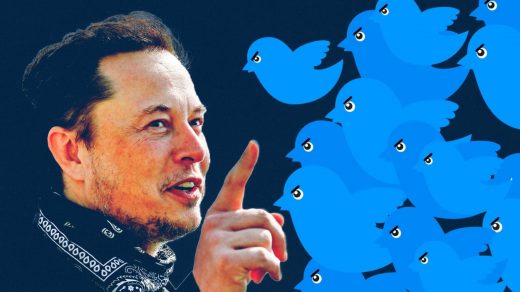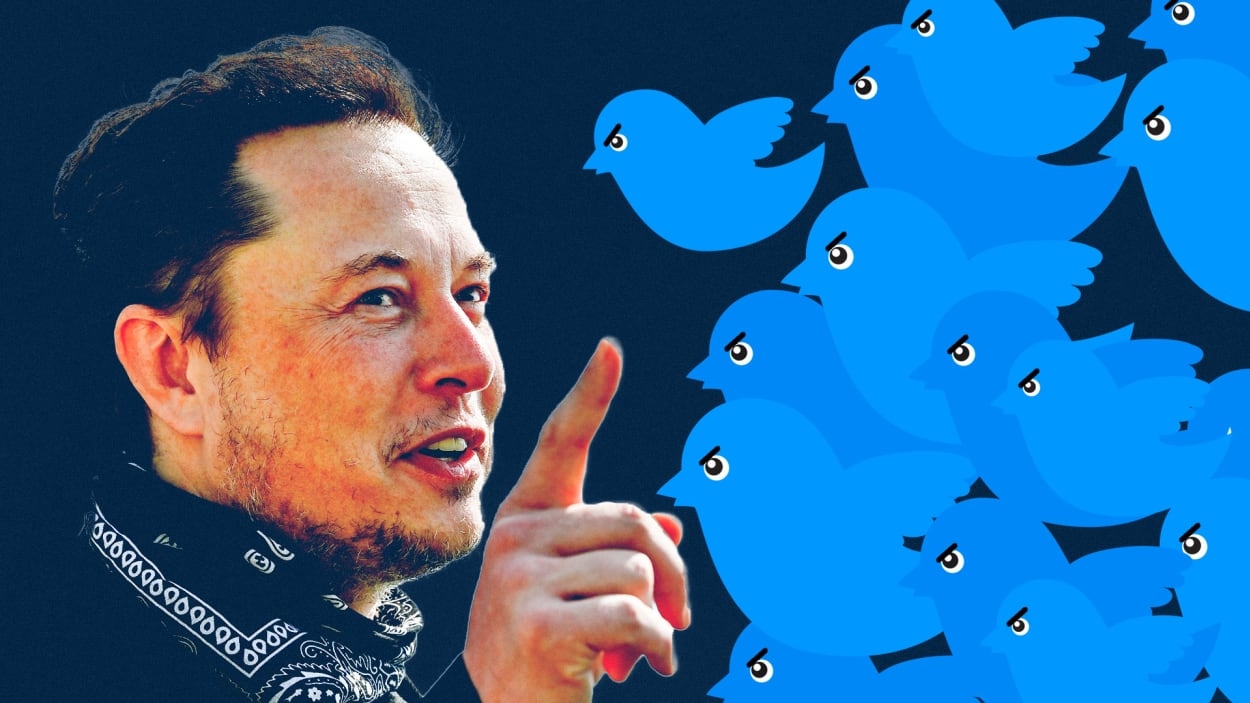Elon Musk just broke Twitter by banning outside social links
By Chris Stokel-Walker
The twists and turns of Elon Musk’s eight-month long courtship and purchase of Twitter has been full of plenty of questionable decisions—from Musk bidding over the odds for the platform’s share price, to arbitrarily banning users (and then coming up with excuses to justify the bans after the fact).
But a decision taken while Musk was enjoying the soccer World Cup final in Qatar on Sunday may well be the most questionable decision yet. Twitter Support, the platform’s help desk, tweeted just after 12.30 p.m. E.S.T. that “we will no longer allow free promotion of certain social media platforms on Twitter.”
The account went on to link to a fuller explanation of what had changed. “At both the Tweet level and the account level, we will remove any free promotion of prohibited 3rd-party social media platforms,” the help center page read. Among those “prohibited platforms” are Facebook, Instagram, Mastodon, Truth Social, Tribel, Post, and Nostr, as well as link aggregators such as Linktree. Users can’t link to the sites, nor can they try and port their followers to other platforms without providing links—such as by saying “check out my profile on this site.” Violating this new rule will result in users being temporarily suspended from Twitter. “Subsequent violations may result in permanent suspension,” Twitter claims.
It’s a far cry from Musk’s claims of “free speech absolutism,” and has more in common with the closed-off internet users are more accustomed to in Russia or China.
“It’s the Tencent strategy,” says David Craig, clinical professor of communication at the University of Southern California, who has studied Chinese social media. “Build a firewall to trap users inside. Block and emulate competition.” It’s a model that works in the highly controlled Chinese internet, hidden behind the Great Firewall, but building a social media splinternet is anathema to everything that Western internet users know and love.
And it’s particularly abhorrent to a single subsection of Twitter’s users: its creators. The lifeblood of the platform, they create content for free on the platform—ostensibly because they can monetize their audience on Twitter once they move elsewhere. They often do that by pushing fans on Twitter to their profiles on Instagram, where they’re able to get money, or to merch stores through link-in-bio platforms such as Linktree. Now, however, that’s not possible.
“This announcement is a clear indication that the new decision-makers at Twitter are inexperienced in the social media space,” says Karyn Spencer, an industry expert who previously worked as the head of creator liaison for defunct video app Vine when it was owned by Twitter.
Spencer says that erecting walls that prevented creators from plugging their wares on other platforms and cross-pollinating those audiences was a strategy that social media companies tried years ago. “Usually it was covert and not explicit: Platforms would leverage backend technology to suppress posts that promoted user accounts elsewhere,” she says. “This is why, for example, Vines never saw popularity on Facebook. A Vine link was as good as dead as soon as someone posted it on Facebook.”
That’s something Michael Veale, associate professor at University College London, who specializes in technology law, says he also saw. “This is both new and old,” he says. “Facebook was paranoid that third-party apps such as Circle were using their APIs to duplicate the social graphs they had built up, and cut them off.” What’s different here is that Facebook saw a third-party app as the threat. Twitter sees the users as the risk as they desperately seek lifeboats to flee the sinking ship.
“For many individuals, Twitter has been fast becoming a way to co-ordinate escape from Twitter with a social graph intact, using the Twitter API by including fediverse handles or links in their usernames or bios,” says Veale. “When users are actively trying to leave, it seems pretty unlikely that an extremely blunt, haphazard policy will stop their exit.”
It’s also legally dicey, according to Catalina Goanta, associate professor in private law and technology at Utrecht University in the Netherlands. “Twitter can’t just go and apply new moderation terms from one day to another,” she says. “It needs to first inform consumers, as it holds itself responsible for in its own ToS. I’m a Twitter user and I got no notification yet. I wonder if they sent any. I think Elon Musk should read his own platform’s ToS.”
Musk might also want to read his own tweets: This past June, as he was partway through lodging his bid for Twitter, he posted “The acid test for any two competing socioeconomic systems is which side needs to build a wall to keep people from escaping? That’s the bad one!” He’s now the one building the wall to try and keep users on Twitter and away from competing platforms. And so far, the reaction has been pretty negative. “This is fucking ridiculous lmao,” wrote Thomas “TommyInnit” Simons, an 18-year-old YouTuber and Twitch streamer from the U.K., who has previously used Twitter to build a four million-strong following. (Simons did not immediately respond to a request to comment.)
The closed-door era of social media changed years ago, as creators began to exert more power and were bolstered by the laissez-faire approach taken by YouTube, which historically allowed creators to link out to other platforms—including Patreon—on their profiles. “When creators started to gain more influence and power, they pressured other platforms to allow them the same promotional freedom,” says Spencer. “This was a solid indicator of the beginning of the creator economy.”
The evolution of that creator economy—a $100 billion industry—appears to have entirely passed Musk by. It’s an indication of just how out of touch Twitter’s esoteric, eccentric CEO is. “Twitter leadership acts like their policy ideas are new and genius when they’re actually just fast-tracking themselves to an embarrassing and expensive death,” says Spencer. “As a former Tweep, I couldn’t be more heartbroken to witness this trainwreck.”
(66)



